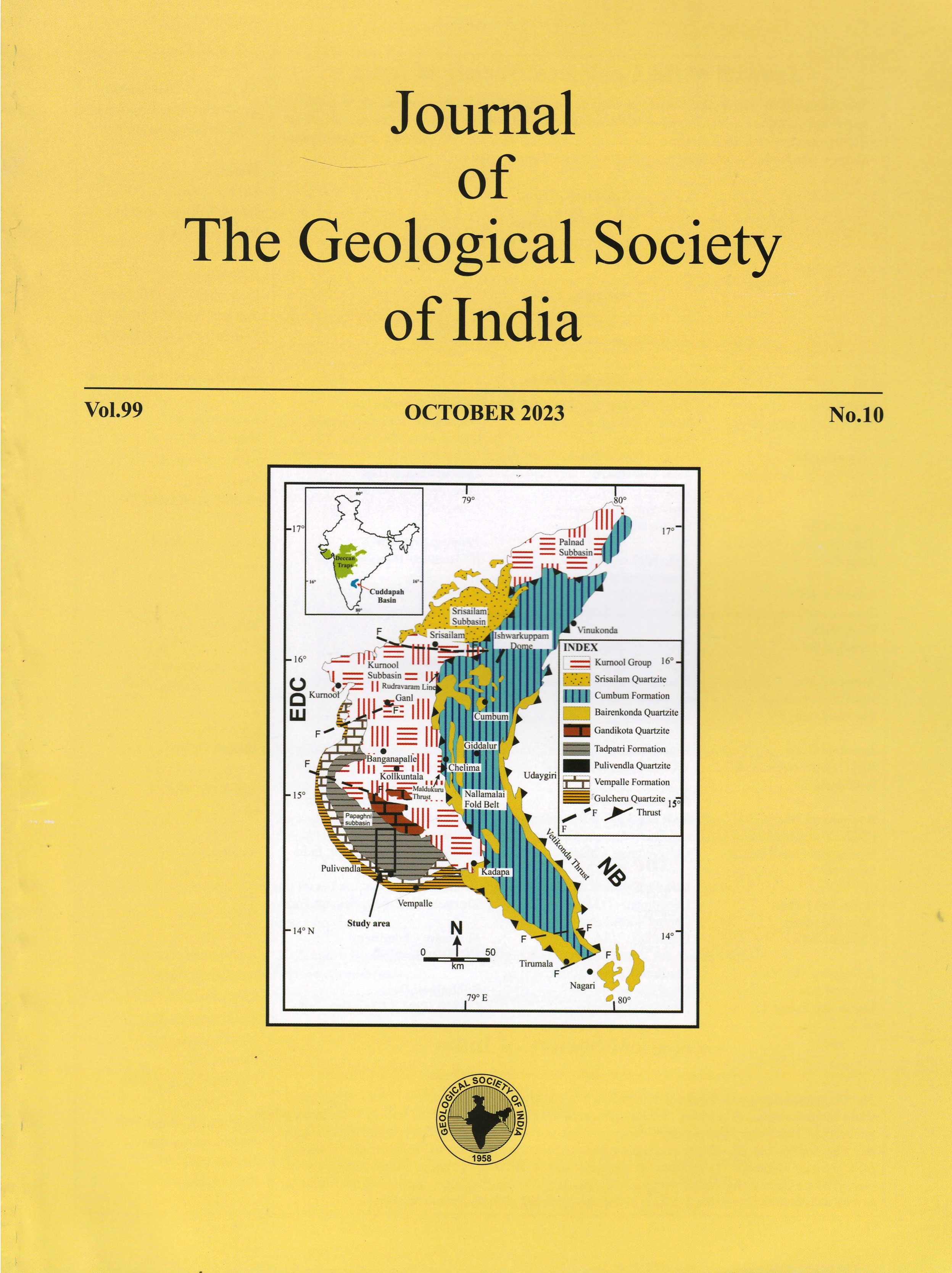Organic Petrological Facets and the Evolution of Paleomire, Matasukh Lignite Deposits, Rajasthan, India
DOI:
https://doi.org/10.1007/s12594-023-2484-9Keywords:
No KeywordsAbstract
The present research work attempts to understand the organo-petrological facets of the lignite hosted in the Tertiary successions in Rajasthan. The maceral diversity was analyzed qualitatively and quantitatively which recorded huminite as the dominant microscopic constituent followed by inertinite and liptinite. The rank parameter of coal evaluated through vitrinite reflectance measurement random (VRo) shows the values vary between 0.19 to 0.27% suggesting lignite in rank. The petrographic investigation point towards the primary phase of degradation of organic matter corroborated through the dominance of huminite suggesting frequent flooding and the presence of funginite, demonstrating intense fungal activity in the mire. The paleodepositional model records elevated values of gelification Index (GI) ranging from 1.63 to 3.88 with well-preserved cell structures pointing towards an early phase of coalification. The model and plot of GI and TPI show that the paleomire developed in a limnic setting.

 A.S. Naik
A.S. Naik






